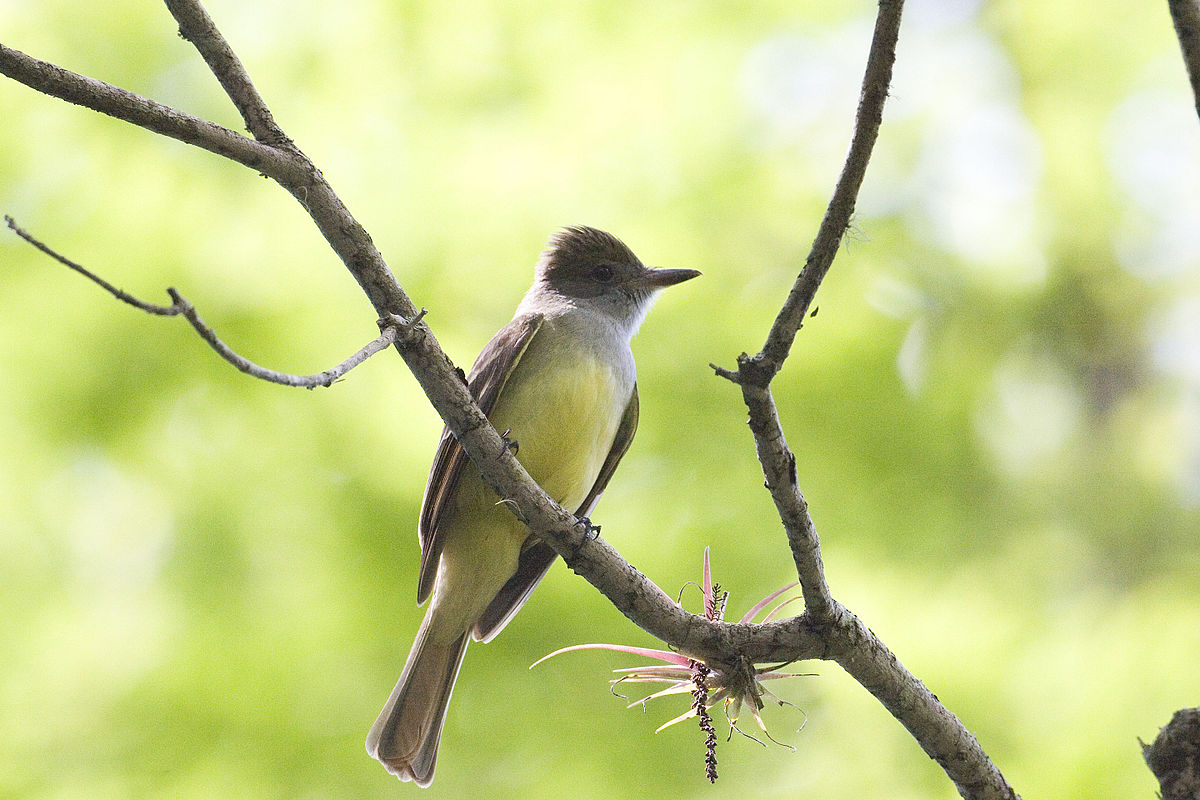Offer
Provide additional details about the offer you're running.
Provide additional details about the offer you're running.
Provide additional details about the offer you're running.

Feature Image By Everglades NPS from Homestead, Florida, United States (KingBird, NPSPhoto, R. Cammauf) [Public domain], via Wikimedia Commons
As the weather increases in temperature we hope to begin catching a glimpse of the broad-shouldered Great Crested Flycatcher. Here are a few key tips and markings you can use this spring to identify this beautiful member of the flycatcher family.
Where to Find the Great Crested Flycatcher
These birds are relatively common in most of eastern North America and take to deciduous trees in open woodlands, high upon the leafy canopy of their favorite trees. As a cavity-dwelling bird, these flycatchers will seek out dead or dying trees for the cavities and crevices they desire for optimal nesting points. Typically, they are not found in the dense and heavily forested woods, preferring to live on the edges of meadows, fields, parks, golf courses and other sheltered, yet open areas.
Because of their cavity-prone tendencies, nesting boxes are a favorite haunt for many great crested flycatchers.
Identification
Great Crested Flycatchers are long and fairly large birds, sporting a stocky, broad shouldered look. Males and females are generally pretty similar in size, measuring between 6.7”-8.3” and sporting an impressive 13.4” wingspan.
Their colouring consists mainly of a reddish-brown plumage with a gray throat and breast. Their heads are more of a brownish-gray coloring and their bellies are a fairly bright yellow color.
Vocals
The males will sing about a 3-second rendition of their call, typically consisting of two short, weeping whistles, in no particular order. The most intense song is the one sung just before dawn as males will sing every couple of seconds of bouts ranging between 15 and 30 minutes in length.
Author: Louise Beckinsale
High Quality Blend